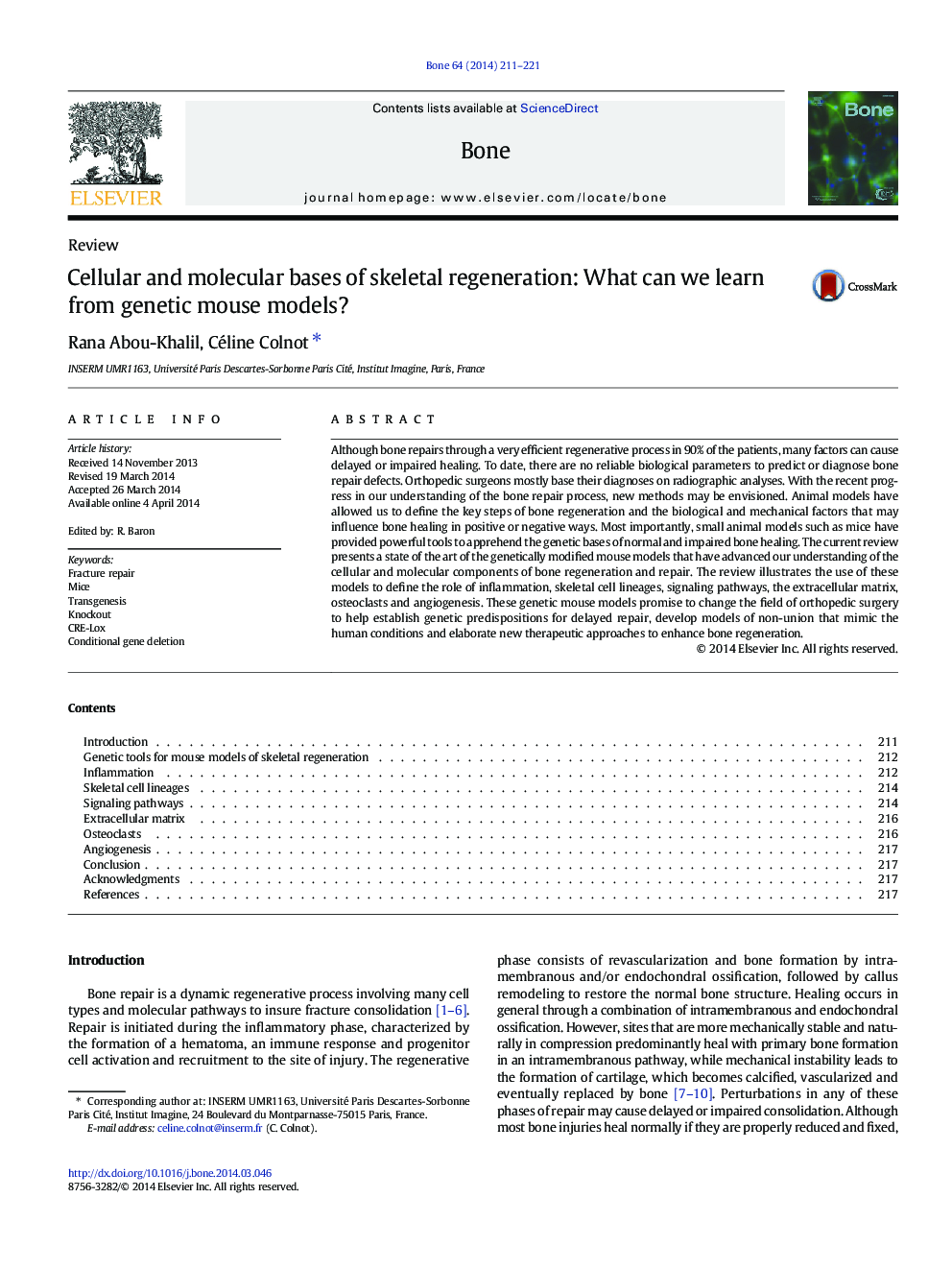| کد مقاله | کد نشریه | سال انتشار | مقاله انگلیسی | نسخه تمام متن |
|---|---|---|---|---|
| 5890039 | 1568155 | 2014 | 11 صفحه PDF | دانلود رایگان |
- Genetic mouse models: tools to investigate the mechanisms of bone repair
- KO, Transgenic, Cre/LoxP models for conditional/inducible gene deletion
- Genetic mouse models allow functional analyses of skeletal cell lineages.
- Models to study inflammation, cell signaling, matrix remodeling and angiogenesis
- Genetic mouse models are essential to develop new drug- and cell-based therapies.
Although bone repairs through a very efficient regenerative process in 90% of the patients, many factors can cause delayed or impaired healing. To date, there are no reliable biological parameters to predict or diagnose bone repair defects. Orthopedic surgeons mostly base their diagnoses on radiographic analyses. With the recent progress in our understanding of the bone repair process, new methods may be envisioned. Animal models have allowed us to define the key steps of bone regeneration and the biological and mechanical factors that may influence bone healing in positive or negative ways. Most importantly, small animal models such as mice have provided powerful tools to apprehend the genetic bases of normal and impaired bone healing. The current review presents a state of the art of the genetically modified mouse models that have advanced our understanding of the cellular and molecular components of bone regeneration and repair. The review illustrates the use of these models to define the role of inflammation, skeletal cell lineages, signaling pathways, the extracellular matrix, osteoclasts and angiogenesis. These genetic mouse models promise to change the field of orthopedic surgery to help establish genetic predispositions for delayed repair, develop models of non-union that mimic the human conditions and elaborate new therapeutic approaches to enhance bone regeneration.
Journal: Bone - Volume 64, July 2014, Pages 211-221
